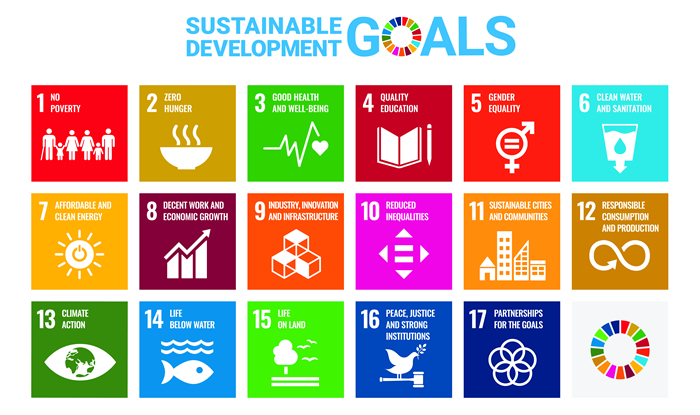This April, Geosynthetica is promoting 30 Days of Earth Day (#30DaysEarthDay). Each day we will publish stories on the intersections between geosynthetics and environmental protection, sustainable development, climate change, and green engineering innovations. We begin by re-emphasizing the United Nations Sustainable Development Goals (SDGs), which are helping nations prioritize and structure programs around the world.
Of note, these Sustainable Development Goals are influencing how even private practice entities, such as engineering houses, focus and present their work.
Geotechnical engineers already have a lot to offer towards achieving the infrastructure-related SDGs, both technically and economically. Geosynthetics are one of their major tools.
SUSTAINABLE DEVELOPMENT GOALS & GEOSYNTHETICS
International Geosynthetics Society Vice President, Dr. Nathalie Touze, delivered an inspiring Giroud Lecture at the 11th International Conference on Geosynthetics (September 2018, Seoul). The lecture’s topic was “Healing the World: A Geosynthetics Solution.” Her engineering vision utilized the UN Sustainable Development Goals as a foundation for understanding what geotechnical engineers and geosynthetics professionals can do now, in their every day work, to contribute to the SDG mission and combat climate change.
Dr. Touze’s message was not one to suggest engineers were not doing these things, but to highlight how they could make their connection to the SDGs clearer, how they could create even more beneficial impact because the designs and solutions they promote already embraced so many sustainability concepts.
Consider that construction practices account for an enormous amount of carbon emissions. Large infrastructure projects disturb a significant amount of land. Heavy truck traffic is involved. Transport of heavy materials accounts is a major contributor to a project’s carbon footprint.
RELATED: IGS Video Focuses on Sustainable Development
With geosynthetics a number of advantages can be realized, such as:
- Smaller construction footprints (e.g., less land disturbance)
- Geosynthetics are significantly lighter than earthen materials like clay so require significantly fewer truckloads to site (e.g., up to 150:1, earthen materials truckloads to 1 truckload of geosynthetic rolls)
- Greater reuse of on-site materials with geosynthetics vs trucking in special fills
These types of benefits tie in nicely with the UN Sustainable Development Goals, which were adopted by UN Member States in 2015. The SDGs are part of the ambitious 2030 Agenda for Sustainable Development that aims to provide “a shared blueprint for peace and prosperity for people and the planet, now and into the future.”
The 17 Sustainable Development Goals included in the plan serve as calls to action in sectors and around realities that cannot be ignored and that require real partnership among nations.

“[The SDGs] recognize that ending poverty and other deprivations must go hand-in-hand with strategies that improve health and education, reduce inequality, and spur economic growth – all while tackling climate change and working to preserve our oceans and forests,” the UN writes on its Sustainable Development Goals page.
Readers are encouraged to follow the UN Division on Sustainable Development Goals (DSDG) on Facebook at www.facebook.com/sustdev and on Twitter at @SustDev.
WHAT ARE YOU DOING TO ACHIEVE SDGS?
During April, Geosynthetica will present stories that highlight the role of geosynthetics in SDGs such as Clean Water & Sanitation, Affordable & Clean Energy, and Climate Action.
How does your work intersect with the UN Sustainable Development Goals? We welcome your involvement in our 30 Days of Earth Day Series. Contact us.












